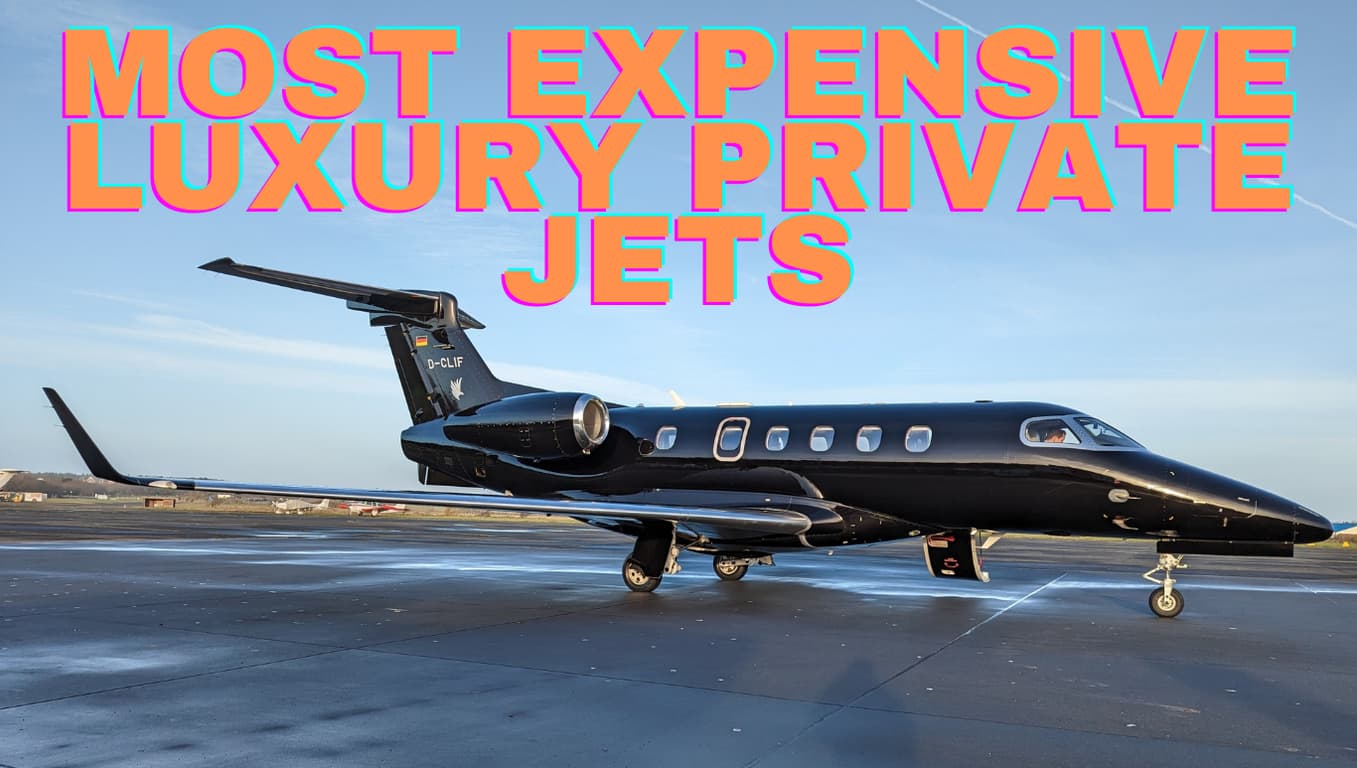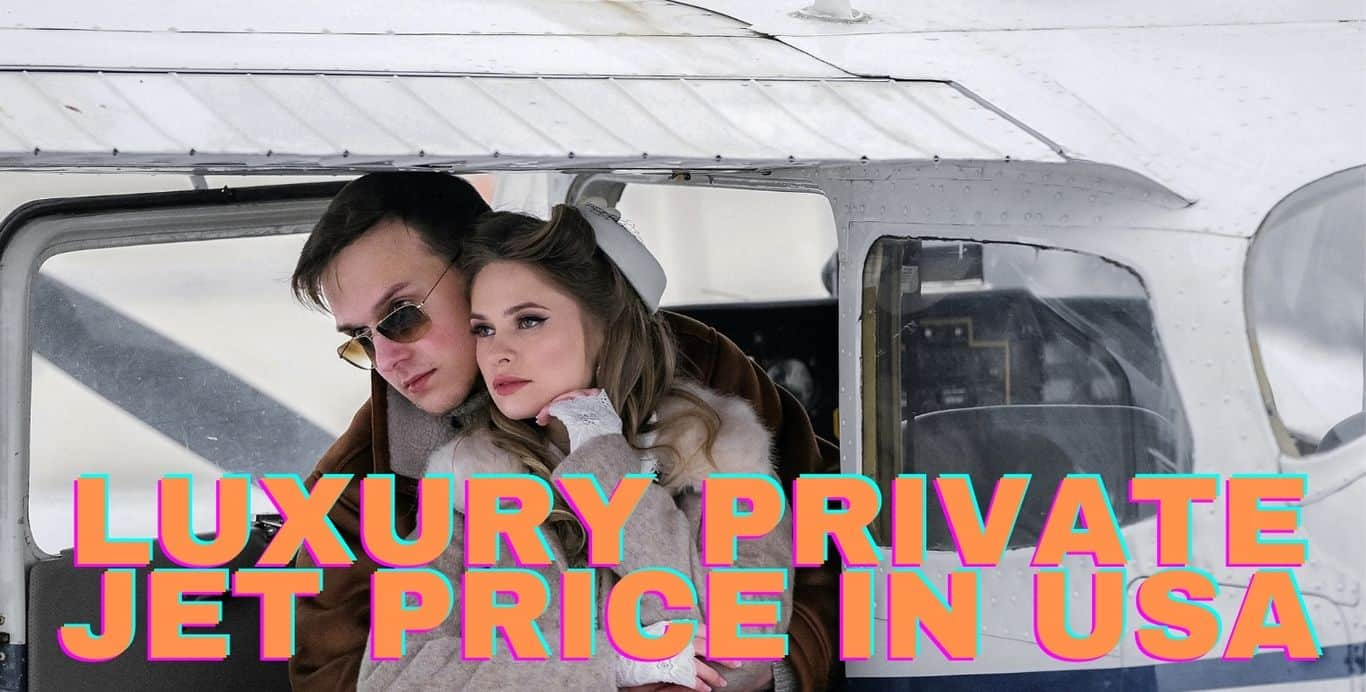How Much Is a Private Jet: Hourly Rates and Purchase Price
Overview of Private Jet Ownership
Private jet ownership symbolizes not just a mode of travel, but a lifestyle marked by convenience and luxury. For many high-net-worth individuals, owning a private jet eliminates the anxiety of commercial flying, offering unparalleled flexibility in travel planning. Ownership entails an investment that can range from $2 million to over $100 million, depending on the model and features. Owning a private jet provides advantages beyond just travel; it represents an asset that can appreciate in value if maintained properly. While it may involve significant ongoing costs such as maintenance, insurance, and crew salaries, many owners find these expenses worthwhile for the freedom and comfort provided.
Benefits of Owning a Private Jet
The benefits of private jet ownership extend beyond luxury. Here are some of the key advantages:
- Time Savings: Bypass long security lines and boarding processes, allowing for swift travel.
- Flexibility: With access to thousands of airports, owners have the freedom to travel directly to their destination on their schedule.
- Comfort: Enjoy customized interiors, privacy, and personal services that commercial airlines cannot match.
- Enhanced Productivity: Conduct meetings or work onboard, allowing for effective use of travel time.
Owning a private jet truly offers a unique blend of convenience and status, catering to the needs of those who value their time and comfort above all.[1][2]
Factors Affecting Hourly Rates
Aircraft Size and Model
When it comes to private jet charters, the size and model of the aircraft play a significant role in determining hourly rates. Generally, smaller aircraft, such as light jets, come with lower hourly costs, ranging from $1,500 to $2,000. In contrast, larger jets—like the luxurious Gulfstream G650—can command rates exceeding $15,000 per hour.
- Light Jets: Ideal for short trips and quick getaways, these jets blend efficiency with comfort. They usually seat 4 to 8 passengers.
- Heavy Jets: Perfect for long-haul flights, these jets offer spacious cabins and premium amenities, accommodating larger groups comfortably.
Choosing the right aircraft model based on the travel requirements can help manage costs effectively while also enhancing the flying experience.
Operational Costs
Operational costs are the backbone of private jet charter pricing, encompassing several elements that can significantly affect the overall charges. Key factors include fuel prices, crew salaries, and airport fees. For instance, fluctuating fuel prices can impact hourly rates, with surcharges often added during times of high fuel costs. Additionally, other operational expenses, such as:
- Crew Requirements: More complex flights may necessitate larger crews, leading to higher costs.
- Ground Handling Fees: Charges related to landing and logistics can vary greatly depending on the airport.
Overall, understanding these operational costs is crucial for accurately estimating the total price of private jet travel. Being aware of these factors ensures a smoother and more budget-friendly travel experience, whether for business or leisure.[3][4]
Typical Hourly Rates for Private Jets
Light Jets
Light jets are a popular choice for travelers looking for efficiency and cost-effectiveness. Typically accommodating 4 to 8 passengers, these jets provide a comfortable way to travel for shorter distances, ranging from 2,100 to 2,300 nautical miles. Hourly rates for light jets generally range from $3,000 to $4,250.
- Examples of Light Jets:
- Cessna Citation Mustang
- Embraer Phenom 100
- Ideal For: Quick business trips, weekend getaways, or traveling with a small group.
Choosing a light jet can save substantial time and stress, especially for destinations with fewer commercial flight options.
Midsize Jets
Midsize jets offer an excellent balance between space and cost, accommodating 6 to 8 passengers for longer trips (2200 to 3500 nautical miles). The hourly rates for midsize jets typically fall between $3,500 to $4,500.
- Popular Midsize Jets:
- Hawker 800XP
- Citation XLS
- Perfect For: Business travelers needing more space and amenities or families traveling together.
Overall, midsize jets offer enhanced comfort and accessibility, making them an appealing option for both corporate and leisure travel. Whether hopping between cities or making longer journeys, these aircraft deliver a fantastic blend of value and comfort.[5][6]
Chartering vs. Owning a Private Jet
Cost Comparison
When deciding between chartering and owning a private jet, cost is a pivotal factor. Full ownership involves significant upfront investments, typically starting at around $5 million, with annual ongoing expenses ranging from $500,000 to $1 million for maintenance, fuel, crew salaries, and storage. On the other hand, chartering allows for flexibility without the hefty initial outlay. Charter prices generally range from $3,500 to $18,000 per hour, depending on aircraft size and type. This means that if you fly only a few times a year, chartering might be the more economical choice, as you only pay for the flights you use.
- Ownership Costs: Initial purchase + maintenance + crew salaries
- Charter Costs: Hourly rates + potential add-ons (landing fees, catering)
This financial flexibility makes chartering a suitable option for occasional flyers or those who prefer to avoid the complexities of ownership.
Flexibility and Convenience
Flexibility is a defining benefit of private jet chartering. Chartering provides the freedom to book flights on-demand, catering to last-minute travel or changing schedules. Whether needing a quick getaway or planning an international trip, clients can choose jets based on immediate needs without the commitment of ownership. In contrast, owning a private jet guarantees accessibility but requires careful planning and scheduling, especially for maintenance and operational logistics. Here’s how they stack up:
- Chartering:
- Immediate flight availability
- No long-term maintenance responsibilities
- Access to a wider variety of jet types
- Ownership:
- Always have your aircraft ready
- Personalization of your jet
- Ideal for frequent travelers with a consistent schedule
Ultimately, the choice boils down to your flying frequency and personal travel needs. Whether you prioritize the financial flexibility of chartering or the convenience of owning your aircraft, both options provide unique benefits tailored to different lifestyles.[7][8]
Hidden Costs of Private Jet Ownership
Maintenance and Repairs
Owning a private jet comes with an array of hidden costs that can quickly add up, with maintenance and repairs being a significant aspect. Just like any vehicle, a private jet requires regular upkeep to ensure safety and compliance with aviation regulations.
- Annual Maintenance Costs: Owners can expect to spend anywhere from $500,000 to $1 million annually.
- Routine Inspections: Regular annual inspections and component replacements are mandatory.
- Unexpected Repairs: Unforeseen repairs, like replacing a blown tire—which can cost between $2,000 and $3,000—are also commonplace.
These costs can be daunting, especially if multiple repairs arise simultaneously.
Insurance and Crew Expenses
Another hidden cost involves insurance and crew salaries. Securing a comprehensive insurance policy is crucial to protecting your investment.
- Insurance Premiums: Depending on factors such as the jet’s value and usage, annual premiums can range from $30,000 to $500,000.
- Crew Salaries: Hiring professional crew members is a must. A captain’s salary typically starts around $150,000 per year, with co-pilots and additional staff increasing the total expense.
Ultimately, these hidden costs can significantly impact the overall financial commitment of owning a private jet. Understanding and budgeting for these expenses is essential for prospective owners.[9][10]
Purchasing a Private Jet
New vs. Pre-Owned Jets
When considering the purchase of a private jet, buyers face the choice between new and pre-owned aircraft. New jets, starting at around $5 million for Very Light Jets (VLJs) and exceeding $110 million for larger models, offer the latest features and technology. However, they do come with steep depreciation—typically losing about 10% to 20% of their value in the first year alone. On the flip side, pre-owned jets provide a more cost-effective option, often at 30% to 60% less than new models. For instance, a used Gulfstream G550 might sell for approximately $30 million, compared to its new price of around $60 million. This significant savings, combined with lower initial investment and reduced depreciation concerns, often make pre-owned jets an attractive choice for buyers.
Financing Options
Financing a private jet purchase can make ownership more accessible. Various options exist, including:
- Traditional Bank Loans: These provide long-term financing—often up to 20 years—similar to purchasing a home.
- Leasing Agreements: Some companies offer lease-to-own programs, allowing buyers to lease with the option to purchase later.
With interest rates typically higher for jet financing, it’s crucial for buyers to evaluate their financial readiness and choose a plan that aligns with their travel needs and budget. Overall, understanding the differences between new and pre-owned jets, along with the available financing options, is paramount for making informed decisions in private jet ownership.[11][12]
Top Private Jet Models and Their Prices
Gulfstream G650
The Gulfstream G650 is often hailed as the pinnacle of luxury in private aviation. Designed for long-range capability, this impressive jet can fly up to 7,000 nautical miles, making it perfect for transcontinental and intercontinental travel.
- Passenger Capacity: Up to 19
- Price Range: $65 million to $75 million for a new model
- Hourly Operating Cost: Approximately $15,000 to $18,000
This aircraft is renowned for its spacious and elegantly crafted interior, combined with advanced technology, ensuring a smooth and comfortable ride. Many business executives and celebrities favor the G650 for its unparalleled combination of comfort, performance, and prestige.
Cessna Citation Longitude
Another popular model is the Cessna Citation Longitude, a fantastic choice for those seeking a balance between luxury and efficiency. With a range of 3,500 nautical miles, it’s ideal for domestic and some international flights.
- Passenger Capacity: Up to 12
- Price Range: $25 million to $30 million
- Hourly Operating Cost: Approximately $8,000 to $10,000
The Longitude is celebrated for its roomy cabin and advanced avionics, making it a favorite for corporate travelers who value productivity and comfort. Its impressive performance and competitive pricing make it an attractive option for many private jet users. Ultimately, selecting the right jet model depends on specific travel needs, budget, and personal preferences. Each of these models represents a distinct level of luxury, versatility, and operational efficiency, catering to the demands of modern travelers.[13][14]
Tax Considerations for Private Jet Owners
Depreciation Benefits
Owning a private jet comes with substantial financial implications, and one significant advantage is the ability to benefit from depreciation. Similar to other assets, private jets depreciate over time, and owners can leverage this depreciation for tax purposes.
- Depreciation Allowance: The IRS allows aircraft owners to deduct depreciation over a span of five to seven years, reflecting the asset’s declining value.
- Tax Savings: This can result in substantial tax savings, potentially recovering tens of thousands of dollars annually.
For instance, a $10 million jet could yield significant depreciation deductions, making it more financially viable for frequent flyers.
Tax Deductions
In addition to depreciation, private jet owners can utilize various tax deductions to minimize their tax liability.
- Operating Expenses: Costs such as maintenance, fuel, insurance, and hangar fees are typically deductible.
- Business Use: If the jet is utilized for business purposes, expenses related to flights can also be claimed, maximizing the tax benefits.
By carefully documenting all expenses and understanding the tax rules, owners can optimize their deductions. Engaging with a tax professional knowledgeable about aviation can also provide guidance on ensuring compliance while maximizing these financial benefits. Overall, being aware of the tax implications of private jet ownership can significantly enhance the economic rationale behind the investment.[15][16]
Renting a Private Jet
Perks of Renting
Renting a private jet offers a plethora of benefits that cater to both business and leisure travelers. One of the most appealing perks is the flexibility it provides. You can book a flight on short notice and choose an aircraft that meets your specific needs for each trip.
- Convenience: Avoid the hassle of commercial travel, such as long security lines and flight delays.
- Privacy: Enjoy personal space and tailored services, allowing you to conduct meetings or relax without distractions.
- Access: Fly to airports that commercial airlines may not reach, making remote destinations more accessible.
The luxurious experience and personalized service make renting a private jet a truly enjoyable travel option.
Rental Costs
While renting a private jet comes with many benefits, it’s important to understand the associated costs.
- Hourly Rate: Charter rates typically range from $2,000 to over $10,000 per flight hour, depending on aircraft size and type.
- Cost Breakdown:
- Light Jets: $3,000 – $4,250
- Midsize Jets: $3,500 – $5,500
- Heavy Jets: $8,000 – $10,000
Keep in mind that additional fees may apply, including landing fees, fuel surcharges, and catering. With careful planning and awareness of the costs involved, renting a private jet can be an appealing alternative to traditional commercial flying while providing unmatched luxury and convenience.[17][18]
Conclusion
Summary of Key Points
Navigating the world of private jets involves understanding various options, costs, and benefits. Whether considering ownership or chartering, key points include:
- Costs: Purchasing a private jet can range from $2 million to over $100 million, while chartering offers hourly rates from $2,500 to $10,000.
- Types of Jets: Light jets cater to shorter trips, whereas ultra-long-range jets provide extensive travel capabilities.
- Ongoing Expenses: Ownership entails significant maintenance and operational costs, while chartering minimizes these burdens.
Each option has its pros and cons, depending on travel frequency and personal needs.
Final Thoughts and Recommendations
When deciding between chartering or owning a jet, consider your specific travel patterns and budget. If you fly under 200 hours a year, chartering is likely the better option. However, if your travels require flexibility and frequency, exploring fractional ownership could be a wise compromise. Always consult with a reputable advisor to tailor your choices to fit your travel preferences. No matter how you fly, the experience of private air travel offers unparalleled luxury and convenience—making it worth the investment.[19][20]







